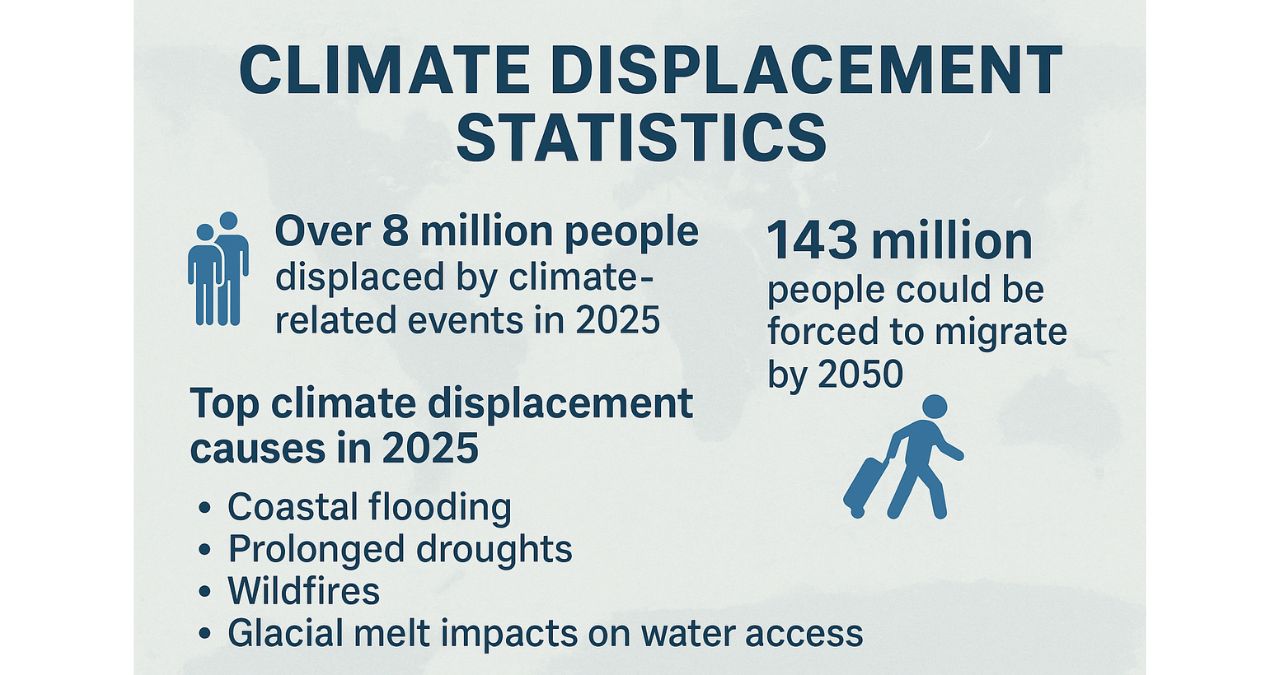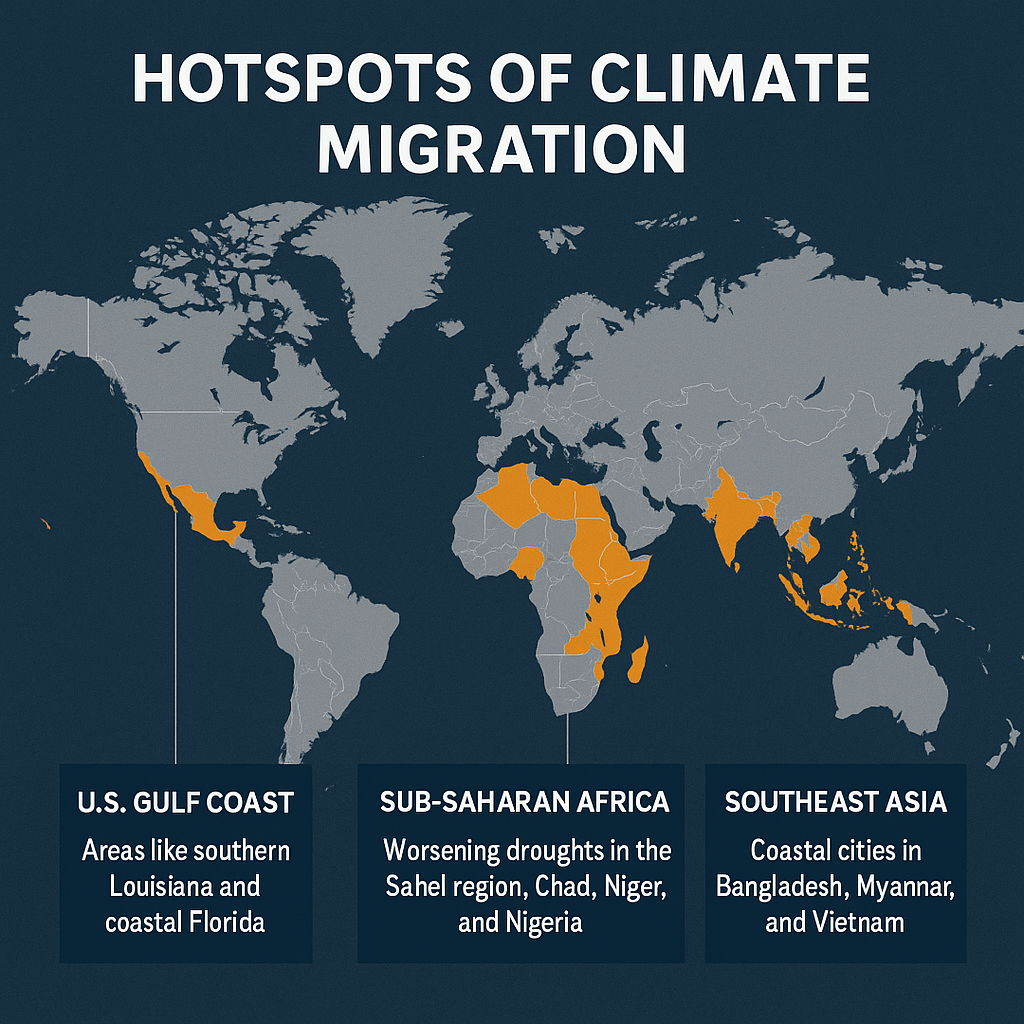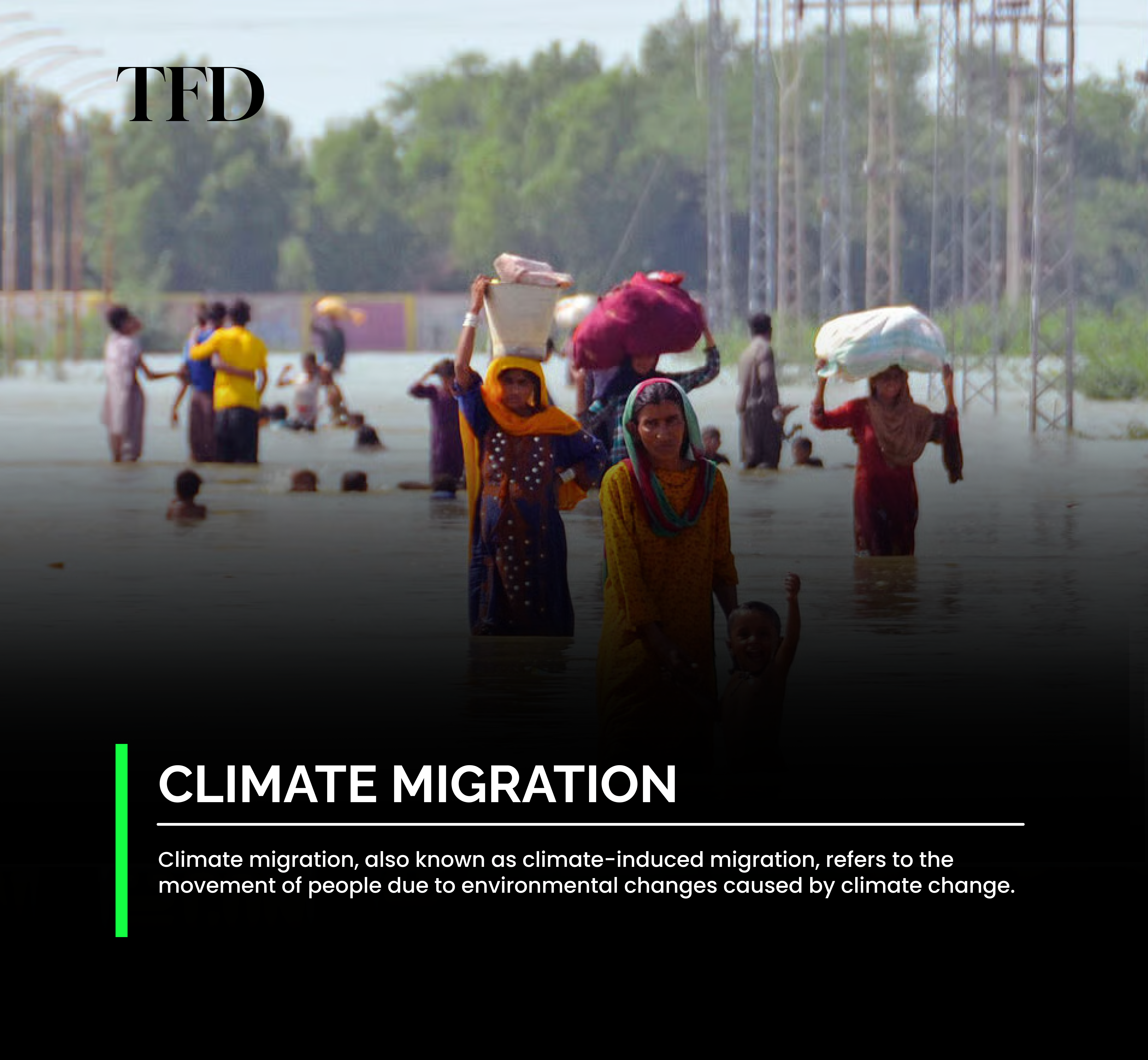Where Climate Change Is Driving Migration in 2025 and What It Means
As seas rise, droughts intensify, and extreme weather becomes the new normal, climate migration trends in 2025 are no longer projections — they’re unfolding realities. From island nations like Tuvalu to low-lying U.S. cities such as Miami, people are being displaced by environmental change. This year marks a turning point in global awareness, policy response, and humanitarian urgency.
Stats: The Numbers Behind the Movement
According to the United Nations International Organization for Migration (IOM), over 8 million people were displaced by climate-related events in 2025 alone. The broader forecast is even more sobering: 143 million people could be forced to migrate by 2050 due to rising seas, food insecurity, desertification, and heatwaves.
Top climate displacement causes in 2025:
- Coastal flooding
- Prolonged droughts
- Wildfires
- Glacial melt impacts on water access

Hotspots: Where Climate Migration Is Most Intense
-
U.S. Gulf Coast: Areas like southern Louisiana and coastal Florida are experiencing internal climate migration as sea-level rise swallows land and floods communities.
-
Sub-Saharan Africa: Worsening droughts in the Sahel region are pushing millions toward cities or across borders into countries like Chad, Niger, and Nigeria.
-
Southeast Asia: Coastal cities in Bangladesh, Myanmar, and Vietnam are facing mass displacement from increasingly severe monsoon flooding and rising ocean tides.

🇦🇺 Case Study: The Australia–Tuvalu Climate Visa Agreement
In a groundbreaking bilateral deal signed in late 2024 and enacted in 2025, Australia granted up to 280 Tuvaluans per year the right to migrate as “climate-displaced persons.” This climate visa recognizes rising seas as a humanitarian crisis and establishes a new precedent in international migration law.
“It’s not just about saving lives — it’s about preserving cultures,” said Minister Pat Conroy, head of Australia’s Pacific Development portfolio.
This agreement is now being studied by the European Union and Canada, which face rising pressure to offer similar humanitarian pathways.

Policy Implications: Global Systems Under Stress
As climate migration surges, legal systems are struggling to catch up. Current international refugee frameworks, such as the 1951 Refugee Convention, do not classify climate-displaced individuals as refugees, leaving many in legal limbo.
Key developments in 2025:
-
The UN began drafting a “Climate Displacement Protocol”, proposed for 2026 ratification.
-
Urban planners in cities like Houston and Berlin are redesigning housing strategies to accommodate “climate migrants.”
-
Federal resettlement funds have been reactivated in the U.S. for domestic climate migration (FEMA + HUD joint initiative).
“Migration due to climate is no longer hypothetical. It’s here.” — UNHCR official, Geneva Climate Forum, March 2025
Conclusion: The Human Face of Climate Change
The climate migration trends of 2025 reflect both a humanitarian crisis and a profound call to action. As millions move to survive, the world must evolve through policy, empathy, infrastructure, and cross-border collaboration. Recognizing the human face behind climate statistics is key to crafting sustainable, ethical, and forward-looking solutions.
Also read: Small Business AI Adoption in the USA (2025): Tools, Trends & Transformation








